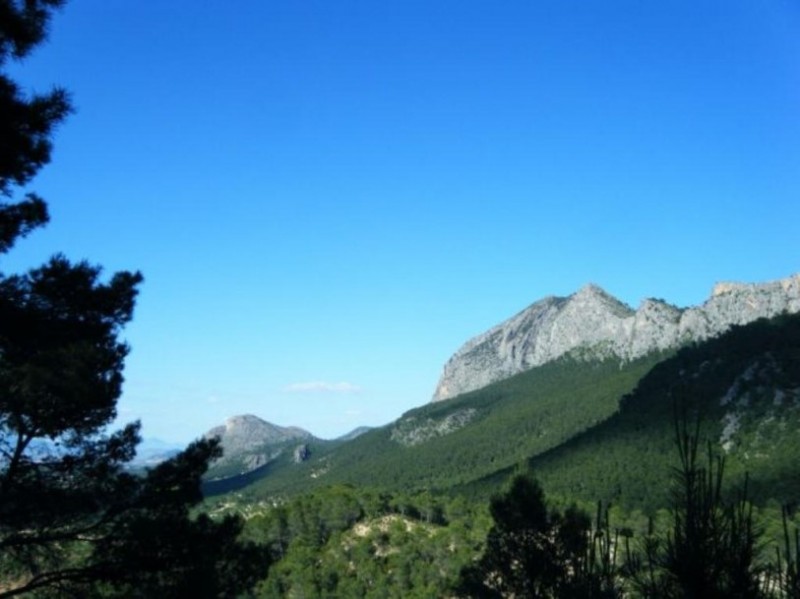- Region
- Águilas
- Alhama de Murcia
- Jumilla
- Lorca
- Los Alcázares
- Mazarrón
- San Javier
-
ALL AREAS & TOWNS
- AREAS
- SOUTH WEST
- MAR MENOR
- MURCIA CITY & CENTRAL
- NORTH & NORTH WEST
- TOWNS
- Abanilla
- Abarán
- Aguilas
- Alamillo
- Alcantarilla
- Aledo
- Alhama de Murcia
- Archena
- Balsicas
- Blanca
- Bolnuevo
- Bullas
- Cañadas del Romero
- Cabo de Palos
- Calasparra
- Camping Bolnuevo
- Campo De Ricote
- Camposol
- Canada De La Lena
- Caravaca de la Cruz
- Cartagena
- Cehegin
- Ceuti
- Cieza
- Condado de Alhama
- Corvera
- Costa Cálida
- Cuevas De Almanzora
- Cuevas de Reyllo
- El Carmoli
- El Mojon
- El Molino (Puerto Lumbreras)
- El Pareton / Cantareros
- El Raso
- El Valle Golf Resort
- Fortuna
- Fuente Alamo
- Hacienda del Alamo Golf Resort
- Hacienda Riquelme Golf Resort
- Isla Plana
- Islas Menores & Mar de Cristal
- Jumilla
- La Azohia
- La Charca
- La Manga Club
- La Manga del Mar Menor
- La Pinilla
- La Puebla
- La Torre
- La Torre Golf Resort
- La Unión
- Las Palas
- Las Ramblas
- Las Ramblas Golf
- Las Torres de Cotillas
- Leiva
- Librilla
- Lo Pagan
- Lo Santiago
- Lorca
- Lorquí
- Los Alcázares
- Los Balcones
- Los Belones
- Los Canovas
- Los Nietos
- Los Perez (Tallante)
- Los Urrutias
- Los Ventorrillos
- Mar De Cristal
- Mar Menor
- Mar Menor Golf Resort
- Mazarrón
- Mazarrón Country Club
- Molina de Segura
- Moratalla
- Mula
- Murcia City
- Murcia Property
- Pareton
- Peraleja Golf Resort
- Perin
- Pilar de la Horadada
- Pinar de Campoverde
- Pinoso
- Playa Honda
- Playa Honda / Playa Paraíso
- Pliego
- Portmán
- Pozo Estrecho
- Puerto de Mazarrón
- Puerto Lumbreras
- Puntas De Calnegre
- Region of Murcia
- Ricote
- Roda Golf Resort
- Roldan
- Roldan and Lo Ferro
- San Javier
- San Pedro del Pinatar
- Santiago de la Ribera
- Sierra Espuña
- Sucina
- Tallante
- Terrazas de la Torre Golf Resort
- Torre Pacheco
- Totana
- What's On Weekly Bulletin
- Yecla


- EDITIONS:
 Spanish News Today
Spanish News Today
 Alicante Today
Alicante Today
 Andalucia Today
Andalucia Today
The mountains and regional park of Sierra Espuña in Alhama de Murcia
The Sierra is often known as the "green lung" of the Region of Murcia
The mountains of Sierra Espuña are a pine clad haven of cool in the summer and a glorious place to enjoy a walk at any time of year, with a very wide range of options available to those looking for an enjoyable day out in the Region of Murcia.
The park´s 25,000 hectares are a maze of walks and routes, with recreation areas and restaurants provided for the visitors who flock to the park every weekend, and many enjoyable options for those who enjoy walking, family picnics and barbecues or just a tranquil zone of shade in the hot summer.
The park is perhaps most frequently associated with the municipality of Alhama de Murcia, but its boundaries extend also to Totana, Mula, Librilla, Aledo and Pliego. Information about the protected area and the walking routes and facilities within it can be found in the tourist office of Alhama as well as from other sources, and at the Ricardo Codorníu visitors' centre in the heart of the mountains.
The visitors' centre features a permanent exhibition about the flora and fauna of the park, maps of some of the walking routes (many of which start just outside) and public toilets, and is accessible for families with pushchairs and those with wheelchairs.
Walks and Routes within Sierra Espuña
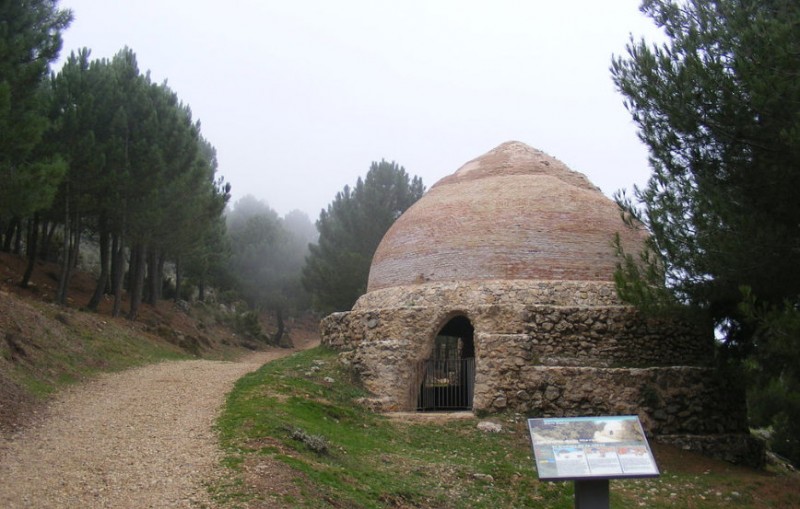
Pozos de Nieve, the snow wells. These are structures dating back to the 16th century, when they were used to compact snow and store ice which which was then transported to the major cities of Murcia, Cartagena and Lorca. The walk is a short one from the nearest car parking area, and can be extended to be more testing for those who want to explore more of the mountain landscape.
Mirador de la Muela and Pino Gordo. This is a viewing point which gives a view from above Alhama de Murcia, over the town, from the top of the Sierra de la Muela. There is also a historic pine tree, called the Pino Gordo, in the same area, and plenty of walks and tracks run from this point.
Route of the Dinosaurs: A 1.5-kilometre walk which encompasses a rope bridge and the place where children like to think they can see a dinosaur's footprint in the rocks. It's a comfortable loop through the pine forests back to the parking area where there are barbecue and picnic facilities.
It is also possible to extended the route to 8 kilometres: ask at the Richard Cordoniu centre for a map.
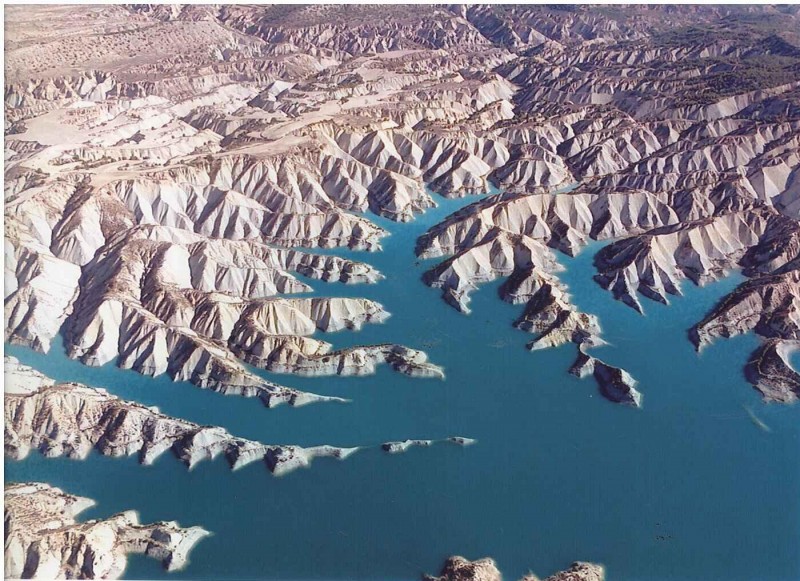
The badlands of the Barrancos de Gebas. The "badlands" are an extraordinary geographical feature within Sierra Espuna which constitute a unique eco-system within the Region of Murcia. Their distinctive barren folds, canyons and peaks create an almost lunar landscape which is fascinating to explore on foot, on quad bikes or mountain bikes, and those who prefer to look down on them from above can do so at the Mirador de Gebas viewing point, which looks out to the jade green waters of the reservoir in the centre of the badlands. There is a walk from the Mirador down to the water, about 3 kilometres each way, which involves quite a bit of descent and ascent, and should only be undertaken by the reasonably fit. Click for further details.
Activities in Sierra Espuña
There are many companies offering activity products, but most are Spanish and speak limited English, one notable exception being the British-run Mariposa hotel and restaurant. The hotel staff offer a wide range of adventure activities and works closely with reliable and recommended guides, priding themselves on quad bike tours, cycling tours, canoe trips and walks as well as climbing, paragliding and horse riding. They also offer bicycles for hire.
Flora and fauna in Sierra Espuña
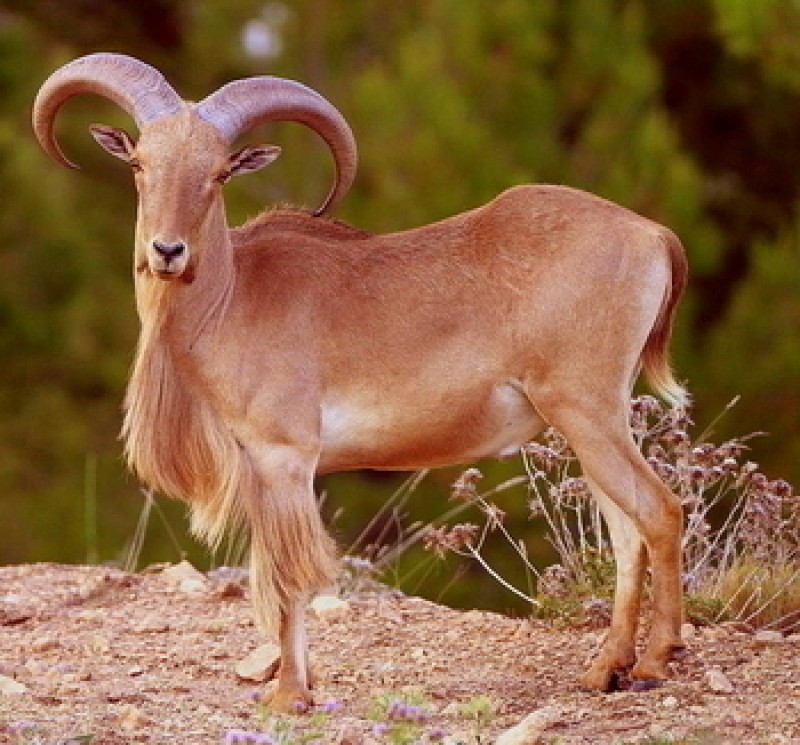
The vast forests of Sierra Espuña are home to a wide range of wildlife, and the variety of conditions ensures an interesting visit for those with an interest in nature. As mentioned above, the Ricardo Codorníu visitors centre has plenty of information available about the wildlife in the area, and a good display showing some of the species and specimens to be found in the Sierra Espuña.
The predominant species of tree in the Sierra Espuña is the Aleppo pine, the species preferred by Ricardo Codorníu for the reforestation of the mountains in the late 19th century, although on higher ground it gives way to the European black pine. There are also small areas of holm oaks, Portuguese oaks and maple trees.
Around the water run-off channels and near the natural springs there are areas abounding in elms, poplars and black poplars, together with a wide range of bushy plants including honeysuckle, wild roses and sarsaparilla. On some of the slopes the undergrowth is very thick, consisting of Kermes oaks, mastic, hawthorns, juniper and cane apples among others. The differences between the slopes facing in different directions and with different types of exposure to the sun can be easily seen by the differences in the vegetation growing throughout the Sierra Espuña.
On the peaks, the vegetation is characterised by the need to adapt to the extreme weather conditions, and consists mainly of broom (“Nun’s cushion”) and scale-leaf junipers.
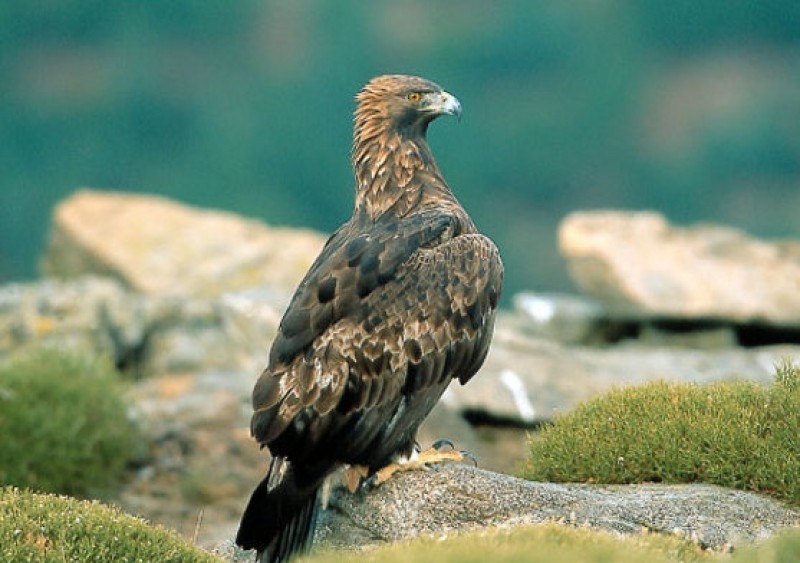
As for fauna, there is a good deal of variety. Among the insects present are some species which are unique to these mountains, such as the Spanish Argus species of butterfly, and the amphibians in the sierra include the natterjack toad and the Iberian painted frog. The reptile population includes the ocellated lizard, the snub-nosed viper and the Montpellier snake.
But it is for its birdlife that the Sierra Espuña is most famed. The dense forests provide perfect homes for great tits, crossbill finches and long-tailed tits. Among the birds of prey, during the day the goshawk and the sparrowhawk constantly patrol the skies, while at night the park is one of the few places in the Region of Murcia where the calls of eagle owls and true owls can be heard.
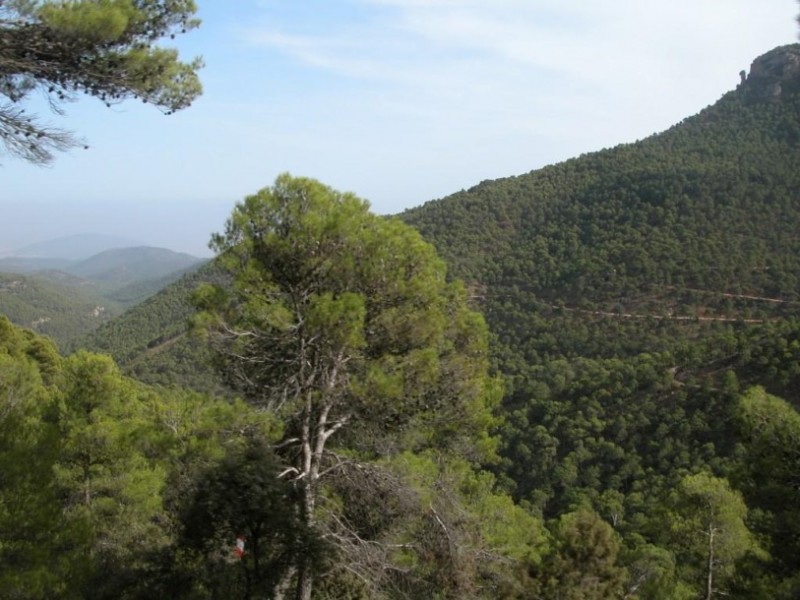
The edges of the pine forest and the hedgerows are home to buntings, thrushes and finches, and there are also significant populations of booted eagles and golden eagles. The presence of some of these species has led to the area being declared a Special Birdlife Protection Zone (ZEPA) of importance within the European Community.
Without any doubt the star mammal in the sierra is the majestic but controversial Barbary sheep. This species is not a native of the park but is an “exotic” introduction to the area dating back to 1970, when it was brought to the area by hunters. Despite outbreaks of sarcoptic mange during the 1980s and 1990s the population grew rapidly to the point where a decision was made in the national courts of Spain that it should be eradicated, due to the threat posed to native goat species and the damage done to crops near the park.
However, after years of disagreement a partial reprieve has been agreed on, with the species being limited in its growth but safeguarded from extinction in the Region of Murcia. As a result it is still possible for visitors to be privileged to a moment of admiration when unexpectedly confronting one of the animals while rounding a bend in the road or in a forest path!
Another species which is very prominent in the Sierra Espuña is the wild boar, and these are also unpopular with farmers as they can cause a lot of damage to crops. There is evidence of boar right across the forest floor, turfed up soil looking as though a rotovator has been through the forest. At one of the rest areas, Fuente del Hilo, the boar are fed in the evenings, making it a good place to head for to see the animals in the wild.
Other mammal species here include red squirrels, dormice, European genets and wildcats.
For more local information in English about the Alhama de Murcia municipality, including news, static information and forthcoming events, go to Alhama Today.

